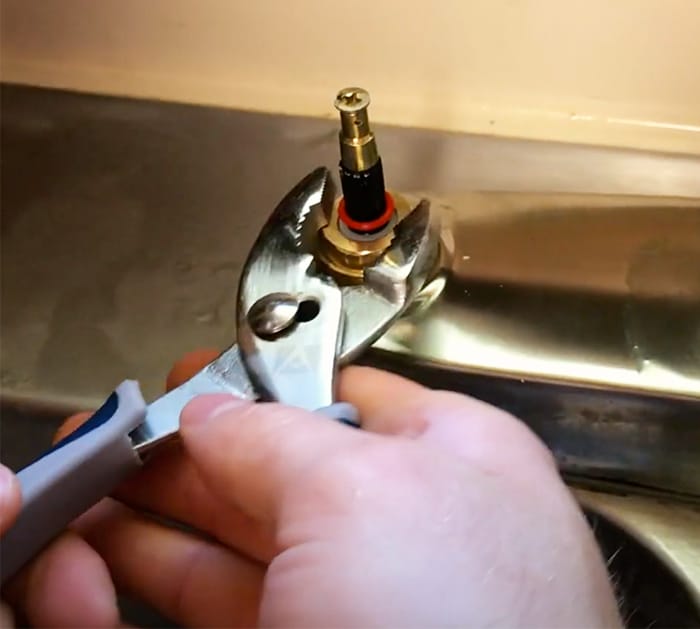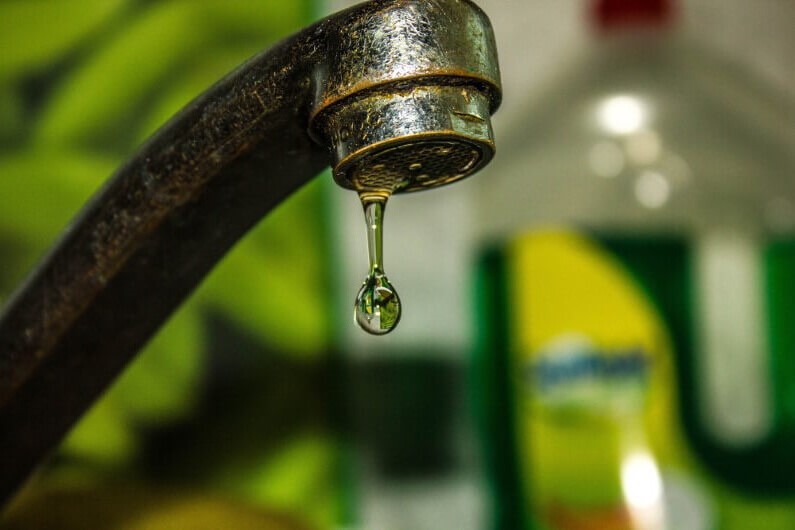This great article listed below relating to Why It's Important to Fix Leaky Faucets is unquestionably engaging. Check it out for your own benefit and see what you think of it.

Trickling faucets might feel like a minor hassle, yet their impact goes beyond just the nuisance of the sound. From drainage to incurring unnecessary financial costs and health and wellness risks, disregarding a trickling faucet can result in numerous effects. In this write-up, we'll delve into why it's vital to address this common family problem without delay and effectively.
Wastage of Water
Ecological Impact
Trickling taps add substantially to water wastefulness. According to the Environmental Protection Agency (EPA), a single tap dripping at one drip per second can squander more than 3,000 gallons of water annually. This not only pressures water sources however also impacts ecosystems and wild animals depending on them.
Step-by-Step Guide to Fixing a Dripping Faucet
Devices Needed
Prior to attempting to repair a leaking tap, gather the required devices, including a flexible wrench, screwdrivers, substitute parts (such as washing machines or cartridges), and plumber's tape.
Usual Faucet Issues and Their Solutions
Determine the kind of tap and the particular concern causing the drip. Common problems include damaged washing machines, rusty valve seats, or faulty O-rings. Refer to maker instructions or on the internet tutorials for detailed guidance on repair services.
Financial Costs
Boosted Water Expenses
Beyond the environmental effect, dripping faucets can pump up water costs significantly. The collected waste over time translates into higher energy expenses, which can have been prevented with prompt repair services.
Possible Property Damage
In addition, extended leaking can lead to harm to components and surfaces bordering the faucet. Water build-up can trigger staining, corrosion, and also structural issues if left neglected, resulting in added repair service costs.
Health and wellness Concerns
Mold And Mildew and Mildew Growth
The constant existence of wetness from a trickling tap creates a suitable atmosphere for mold and mildew and mildew development. These fungi not just jeopardize interior air quality however additionally posture wellness threats, specifically for individuals with breathing problems or allergic reactions.
Waterborne Conditions
Stationary water in trickling faucets can end up being a breeding place for microorganisms and various other virus, raising the danger of waterborne conditions. Impurities such as Legionella germs prosper in stationary water, potentially resulting in major illnesses when ingested or breathed in.
Do it yourself vs. Expert Repair
Advantages and disadvantages of DIY Repair
While some might try to take care of a trickling faucet themselves, DIY fixings come with their own collection of difficulties. Without appropriate expertise and tools, do it yourself attempts can intensify the issue or bring about insufficient repairs, prolonging the issue.
Benefits of Hiring an Expert Plumber
Employing a professional plumber guarantees that the underlying source of the trickling tap is dealt with properly. Plumbing technicians have the knowledge and equipment to diagnose and fix tap problems successfully, saving time and lessening the threat of further damages.
Environmental Obligation
Individual Payment to Preservation
Taking responsibility for dealing with trickling faucets lines up with more comprehensive efforts toward water preservation and ecological sustainability. Every individual's activities collectively make a substantial influence on preserving precious resources.
Lasting Living Practices
By focusing on prompt repair services and adopting water-saving behaviors, individuals contribute to lasting living methods that profit both existing and future generations.
Preventive Measures
Routine Maintenance Tips
To stop dripping taps, carry out routine maintenance such as cleaning up aerators, evaluating for leakages, and replacing worn-out parts promptly. Furthermore, take into consideration installing water-saving tools or upgrading to more reliable components.
Importance of Prompt Services
Addressing leaking faucets as quickly as they're observed prevents further water wastage and potential damage, eventually saving both water and money in the future.
Effect On Home Value
Perception of Well-Maintained Residential Property
Preserving a building in good condition, including addressing upkeep problems like leaking faucets, improves its viewed value and charm amongst possible customers or tenants.
Influence on Resale Worth
Characteristics with properly maintained plumbing fixtures, consisting of taps, command higher resale worths in the realty market. Attending to dripping faucets can contribute to a positive perception throughout building assessments and settlements.
Final thought
Dealing with a dripping faucet exceeds simple ease; it's a vital step towards saving water, minimizing financial prices, and guarding wellness and residential or commercial property. Whether via do it yourself repair work or professional support, taking action to repair dripping faucets is a small yet impactful method to advertise responsible stewardship of resources and add to a healthier, much more lasting future.
How to Fix a Dripping or Leaky Faucet
A leaking faucet is one of the most common problems that homeowners encounter, but it being commonplace doesn’t make it any less annoying. The constant drip drip drip of a leaking bathtub faucet, showerhead, or sink tap can disturb your home’s serenity. Left neglected, a dripping faucet can also result in higher water bills and discoloration or mold growth in your sink or plumbing fixtures.
Fortunately, you don’t have to be a trained plumber to know how to stop a dripping faucet. With some basic tools, replacement parts, and a little patience, leaky faucet repair is a breeze. In this article, we’ll explain what causes dripping faucets and how you can fix them.
What Causes a Leaking Faucet?
Kitchen and bathroom faucets come in all manner of designs, but most involve some combination of valves, O-rings, seals, and washers. The O-ring is usually the weakest link, but any one of these pieces can wear down over time. Heat, moisture, temperature fluctuations, minerals, mold, and movement can contribute to warping and corrosion, breaking the watertight seal. This just comes with the territory of being a homeowner. Everything is always subject to wear and tear, and some component parts of your appliances and fixtures need to be replaced on occasion. At least replacement O-rings are cheap!
More rarely, dripping faucets can be a symptom of excessively high water pressure. Were this the case in your home, you would probably notice that the leak is not isolated to one faucet. Water pressure issues are harder to resolve on your own. We recommend contacting a professional plumber if you suspect your water pressure is too high.
How to Fix a Dripping Faucet
Pipe wrench or monkey wrench Allen wrench set Screwdrivers Old towel or rag Shut off the water.
Before you do anything, you need to turn off the water to keep from drenching your kitchen or bathroom. You should find a valve under the sink and against the wall. Once you’ve turned this valve, try turning the faucet on to confirm that the water source has been cut off.
If you can’t locate your local valve for the faucet you’re working on, you can always shut off the water to the house at the main valve. Of course, this will prohibit anyone from using the sinks, showers, or toilets while you’re working on the faucet that’s giving you trouble.
Plug or block the drain.
You’ll be disassembling the faucet and removing some small bits of hardware. Plug the drain with a stopper or rag to avoid the possibility of a small screw falling into your P-trap.
Take apart the faucet assembly.
There are several varieties of kitchen and bathroom faucets, each with its own manner of assembly. For detailed instructions on how to disassemble your faucet, you can refer to the fixture’s manual or contact the manufacturer. If you know whether you have a ball, disc, cartridge, or compression faucet, you can find detailed schematics online.
In general, you need to begin by removing the faucet handles. You might notice a small screw that you’ll need to remove with a screwdriver or Allen wrench. If you don’t see any visible securing hardware, it’s likely hidden under a decorative cap that can be unscrewed or popped off with flathead screwdriver.
Remove each piece methodically, consulting a schematic when necessary. Take notes or arrange the pieces in such a way to make it easier to correctly reassemble the faucet later.
Remove the cartridge.
Once you’ve removed the handles and securing hardware, you should be able to remove the valve cartridge or stem. Some cartridges will slide right out. Other faucet models will require you to loosen a nut with a pipe wrench before you can remove the valve stem.
Examine the exposed hardware.
With the cartridge or stem removed, inspect the component parts. Check the rubber O-rings for wear and tear. Also examine the seat washer for corrosion or other damage. These pieces are usually the responsible parties for a dripping faucet, but it’s worth inspecting the other component parts while you have the faucet disassembled.
Find replacement parts.
Once you’ve identified which faucet component has failed, find an identical replacement. Your local hardware store should have O-rings, seat washers, and other standard components in stock. If you have a luxury or uncommon faucet, you may have to contact the manufacturer for a replacement part.
It’s a good idea to take your old parts with you to the hardware store so you can compare them with the store’s inventory and be sure you’re purchasing the correct replacement.
Reassemble the faucet.
With your new parts in hand, reconstruct the faucet and handles. Don’t be tempted to overtighten screws or nuts. You might think this could create a better seal, but it can instead damage or bend a delicate part of the assembly and create a new problem for you.
Turn on the water and test the faucet.
The only thing left to do is test your work. Unplug the sink, turn the water back on, and try the faucet. Congratulate yourself on a job well done!
https://www.libertyhomeguard.com/how-to-fix-a-dripping-or-leaky-faucet/

As a serious reader on Water Dripping from Faucet: Why and How to Fix, I think sharing that segment was beneficial. Are you aware of anybody else who is truly interested in the niche? Take a moment to share it. We appreciate reading our article about Why It's Important to Fix Leaky Faucets.